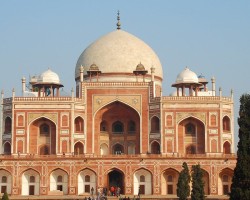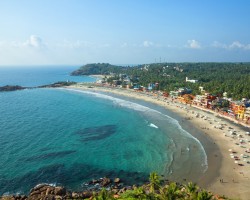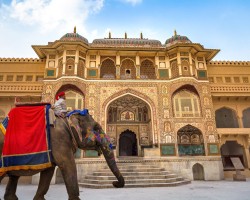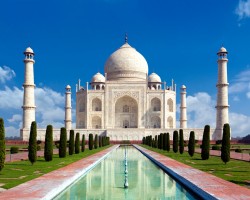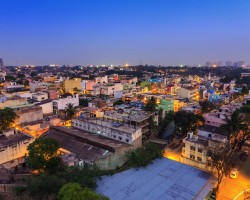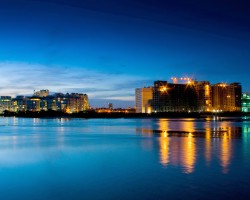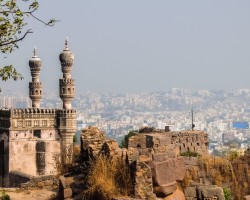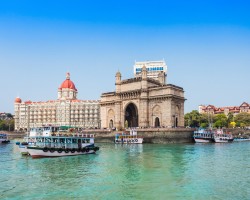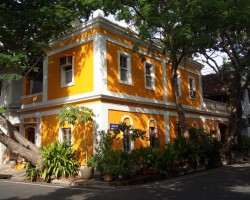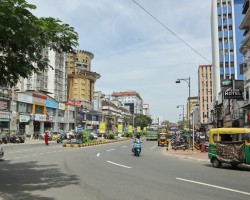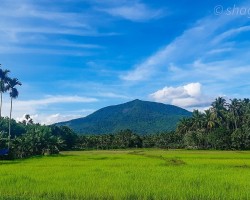Best time to go to India for a perfect weather and where to go?
When is the best time to go to India?
Do you dream of discovering the land of the maharajas? Taking a trip to India is a unique experience that will allow you to explore a country with multiple facets that never fails to captivate visitors.
The country is suitable for tourism all year round, as while the climate in one region may be less favorable, in other parts of India the weather conditions can be pleasant, even ideal.
If you wish to explore the entire country under ideal conditions, the best time to visit India is from November to the end of March. The only month to avoid is May: the intense heat waves preceding the monsoon can be challenging to endure, but if it's not a problem for you, go ahead!
When to visit India based on your interests?
- For trekking in the north and mountain trekking, opt for the months of June to October, during the summer. The rest of the year, snow is abundant and treks are reserved for professionals.
- To enjoy the beaches, the dry season, between November and April, is ideal. During other months, showers are not uncommon.
- For a safari in Indian national parks, go between November and March. You will then have the best chances of seeing elephants, tigers, monkeys, and lions.
- To witness cultural events, join the jubilant crowd at the end of winter. For example, don't miss Holi, the festival of colors, which takes place every year in March.
Where and when to go based on the weather?
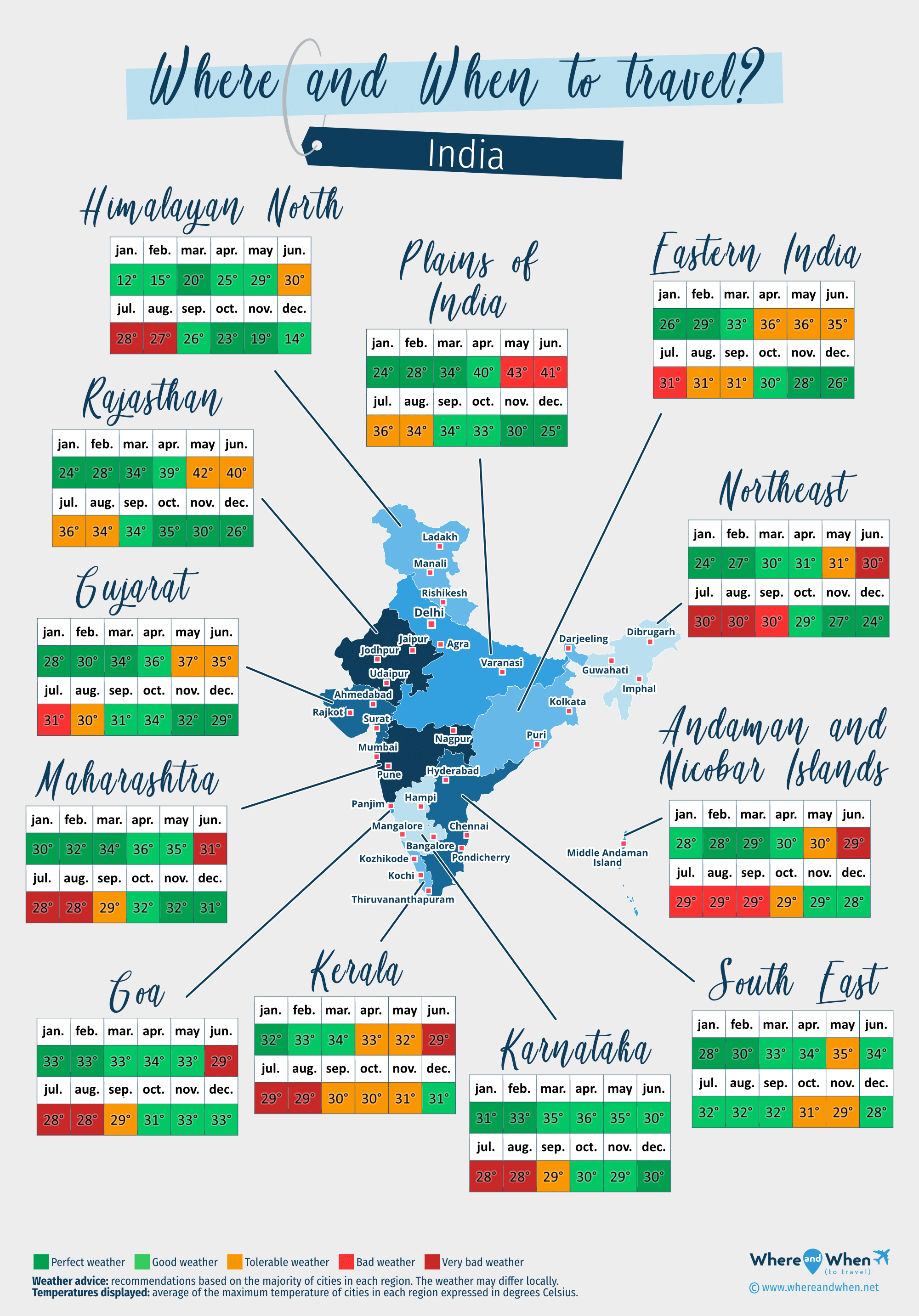
Andaman and Nicobar Islands
Middle Andaman Island
, Port Blair...
Eastern India
Darjeeling, Kolkata, Puri...
Goa
Panjim, Canacona, Mollem...
Gujarat
Ahmedabad, Surat, Rajkot...
Himalayan North
Himachal Pradesh (Shimla), Manali, Ladakh...
Karnataka
Bangalore (Karnataka), Hampi, Mangalore...
Kerala
Thiruvananthapuram, Kochi, Kozhikode...
Maharashtra
Mumbai, Pune, Nagpur...
Northeast of India
Guwahati, Imphal, Dibrugarh...
Plains of India
Delhi, Agra (Taj Mahal), Varanasi (Uttar Pradesh)...
Rajasthan
Jaipur, Udaipur, Jodhpur...
South East of India
Chennai, Hyderabad, Pondicherry...
To get all the information about the climate and weather in India for a specific month, click on the corresponding link below:
India in january India in february India in march India in april India in may India in june India in july India in august India in september India in october India in november India in december
Best time to travel to India by cities
Climate and Weather in India
Seventh largest country on the planet, India is located in Asia, with China, Nepal, Pakistan, and Bangladesh as neighbors.
In general, the climate in India is tropical and dominated by the monsoon, with three seasons:
- Winter, from early November to late March: the weather is dry and sunny.
- Summer in April and May: the temperature rises sharply.
- Monsoon season between early June and late October: torrential rains water some parts of the country, while others rarely see the sun.
Extending widely in latitude, it is one of the few countries in the world to have almost all climates. Thus, the weather in India will be very varied, different from one region to another, but also depending on the relief. But overall, we will differentiate between Northern India and Southern India.

Climate of Northern India
The northern part of the country is actually very vast and experiences different climates depending on the regions:
- Rajasthan has a desert climate, especially around Jaisalmer. In summer, days are hot, even scorching, but temperatures are more pleasant at night. The hottest area is the Ganges plain (around Varanasi), with temperatures reaching 45-48°C. The monsoon period lowers the temperature and the rainfall remains reasonable. In winter, it can be cool, especially in the northern part, but overall temperatures are pleasant: between 20 and 25°C (77°F) during the day.
- In the northwest, below Rajasthan and along the Western Ghats, the region is very green and enjoys an almost tropical climate with lush vegetation. During the monsoon, rainfall is abundant.
- In the northeast, in Assam or Sikkim, the vegetation is lush, with savannas and tropical forests. Unsurprisingly, the monsoon season is very rainy, but the summer is pleasant, with temperatures less torrid than in neighboring regions. Despite the presence of mountains, winters remain mild and dry, with maximum temperatures around 20°C (68°F) during the day.
Learn more:
When to visit Northern India?
Climate of Southern India
In southern India, the climate is tropical, with little temperature variation between seasons. Here are the observed variations:
- The monsoon is significant, with torrential rains. However, it is rare for the rains to fall continuously; they are rather punctual and violent "showers," mostly in the late afternoon. Note that this period lasts from June to September, except in the Madras region where it occurs in November and December. When it is not raining, the sky is often overcast, with an average of 3 hours of sunshine in Bangalore in July.
- Average temperatures range between 30 and 34°C (94°F) throughout the year, with little difference between day and night. However, the ambient humidity can make them difficult to bear during the rainy season.
- Inland areas, especially high-altitude stations like Ooty or Kodaikanal, are much cooler. It is in these reliefs that the British sought refuge to escape the coastal climate.
Learn more:
When to visit Southern India?
Climate in the Himalayas
In the far north of India, the regions of the Himalayas, such as Ladakh and Kashmir, experience a mountain climate. Naturally, the higher the altitude, the lower the temperatures, and the weather can vary greatly from one valley to another.
The seasons are more similar to those we experience in Europe:
- Summer, between June and October, these regions are spared from the monsoon. The weather is beautiful, making it the best time to discover the wonders of the Himalayas.
- Autumn and winter bring rain at the foot of the mountains and heavy snow at higher altitudes. The temperature gradually drops, but generally remains close to 0°C (32°F) .
- Spring is the rainiest season, although not necessarily very abundant.
Climate in the Indian Islands
It is rarely thought of, but India has two archipelagos with a tropical climate:
- The Lakshadweep Islands are located in the Arabian Sea, off the coast of Kerala. Rain falls from May to mid-December. The best time to visit is therefore between December and February, before the intense heat of March and April.
- The Andaman and Nicobar Islands are located in the Bay of Bengal, close to Myanmar. The monsoon is more abundant and lasts longer: from May to December. Therefore, prefer the months of January to March to explore this region.
Temperatures and rainfall in India
On these 3 graphs, we present the evolution of temperatures of India and month-by-month rainfall for the cities of Delhi, Thiruvananthapuram, Panjim, Jaipur and Agra (Taj Mahal), as well as the month-by-month sea temperature for coastal cities.
Peak visitor numbers and tourist seasons in India
Find out when India has its high tourist season (the period when the influx of tourists is highest) and off-peak tourist season using our data and figures.
Tourist seasons in India
The months with low numbers of tourists are: January, February, March, April, May, June, July, August, September, October and November. The number of visitors to India is high in: December.
- Very low season in India: January, February, March, April, May, July, August and September.
- Low season in India: June, October and November.
- Peak season in India: December.
Figure: Visitor index for India month by month
Average price for flights to India
A return flight between Toronto and Delhi is generally cheaper if you go in october ($ 1516 on average): this is the best time for travellers on a tight budget. In contrast, you may end up paying $ 559 more for your airline ticket to Delhi if you go in december.
Where to go in India?
This table allows you to see the maximum temperature for each city and our opinion on the weather month by month (see colour legend below the table).
| Cities | jan. | feb. | mar. | apr. | may | jun. | jul. | aug. | sep. | oct. | nov. | dec. |
| Delhi | 74°F | 81°F | 92°F | 104°F | 112°F | 112°F | 103°F | 97°F | 97°F | 97°F | 88°F | 77°F |
| Thiruvananthapuram | 92°F | 94°F | 94°F | 92°F | 90°F | 86°F | 86°F | 86°F | 86°F | 88°F | 88°F | 90°F |
| Panjim | 92°F | 92°F | 92°F | 94°F | 92°F | 86°F | 83°F | 85°F | 85°F | 90°F | 92°F | 92°F |
| Jaipur | 76°F | 83°F | 94°F | 103°F | 108°F | 108°F | 99°F | 94°F | 95°F | 95°F | 86°F | 79°F |
| Agra (Taj Mahal) | 76°F | 83°F | 95°F | 106°F | 113°F | 112°F | 101°F | 97°F | 97°F | 97°F | 88°F | 79°F |
| Bangalore (Karnataka) | 85°F | 88°F | 94°F | 97°F | 94°F | 86°F | 83°F | 83°F | 83°F | 83°F | 81°F | 81°F |
| Chennai | 83°F | 85°F | 88°F | 92°F | 95°F | 94°F | 92°F | 92°F | 90°F | 88°F | 85°F | 83°F |
| Darjeeling | 59°F | 65°F | 72°F | 76°F | 76°F | 77°F | 76°F | 76°F | 76°F | 72°F | 67°F | 61°F |
| Hyderabad | 86°F | 92°F | 99°F | 104°F | 104°F | 94°F | 86°F | 86°F | 86°F | 88°F | 86°F | 85°F |
| Kolkata | 85°F | 92°F | 99°F | 104°F | 103°F | 101°F | 94°F | 94°F | 92°F | 92°F | 90°F | 85°F |
| Mumbai | 90°F | 90°F | 94°F | 94°F | 94°F | 88°F | 85°F | 85°F | 86°F | 92°F | 94°F | 92°F |
| Pondicherry | 83°F | 85°F | 88°F | 92°F | 95°F | 94°F | 92°F | 92°F | 90°F | 88°F | 85°F | 83°F |
| Varanasi (Uttar Pradesh) | 79°F | 86°F | 97°F | 108°F | 112°F | 108°F | 97°F | 95°F | 94°F | 94°F | 88°F | 81°F |
| Kochi | 90°F | 92°F | 92°F | 92°F | 90°F | 86°F | 85°F | 85°F | 86°F | 88°F | 88°F | 90°F |
| Kozhikode | 90°F | 92°F | 92°F | 92°F | 90°F | 86°F | 85°F | 85°F | 86°F | 88°F | 88°F | 90°F |
| Canacona | 90°F | 92°F | 92°F | 92°F | 92°F | 85°F | 83°F | 83°F | 85°F | 88°F | 90°F | 92°F |
| Mollem | 94°F | 94°F | 94°F | 94°F | 94°F | 86°F | 83°F | 85°F | 86°F | 90°F | 94°F | 94°F |
| Jodhpur | 76°F | 83°F | 94°F | 103°F | 108°F | 106°F | 99°F | 95°F | 97°F | 97°F | 88°F | 79°F |
| Udaipur | 79°F | 86°F | 95°F | 103°F | 106°F | 101°F | 92°F | 88°F | 90°F | 94°F | 88°F | 81°F |
| Ahmedabad | 86°F | 94°F | 103°F | 108°F | 110°F | 104°F | 94°F | 92°F | 94°F | 99°F | 95°F | 88°F |
Legend:
perfect weather
good weather
tolerable weather
bad weather
very bad weather
About India
What can I do in India?
Beaches / swimming
Nature and countryside
Culture and heritage
Sports
Family travel
Crafts / shopping
Gastronomy
Nightlife
Is this weather information for India reliable?
Climate data for India has been gathered every day since January 2009. The analysis of these meteorological data for India allows us to determine the average for each month in Delhi, Thiruvananthapuram, Panjim, Jaipur, Agra (Taj Mahal), Bangalore (Karnataka), Chennai, Darjeeling, and 204 other cities.
So yes: this data is reliable except in cases of temporary climate disruption in the region.

